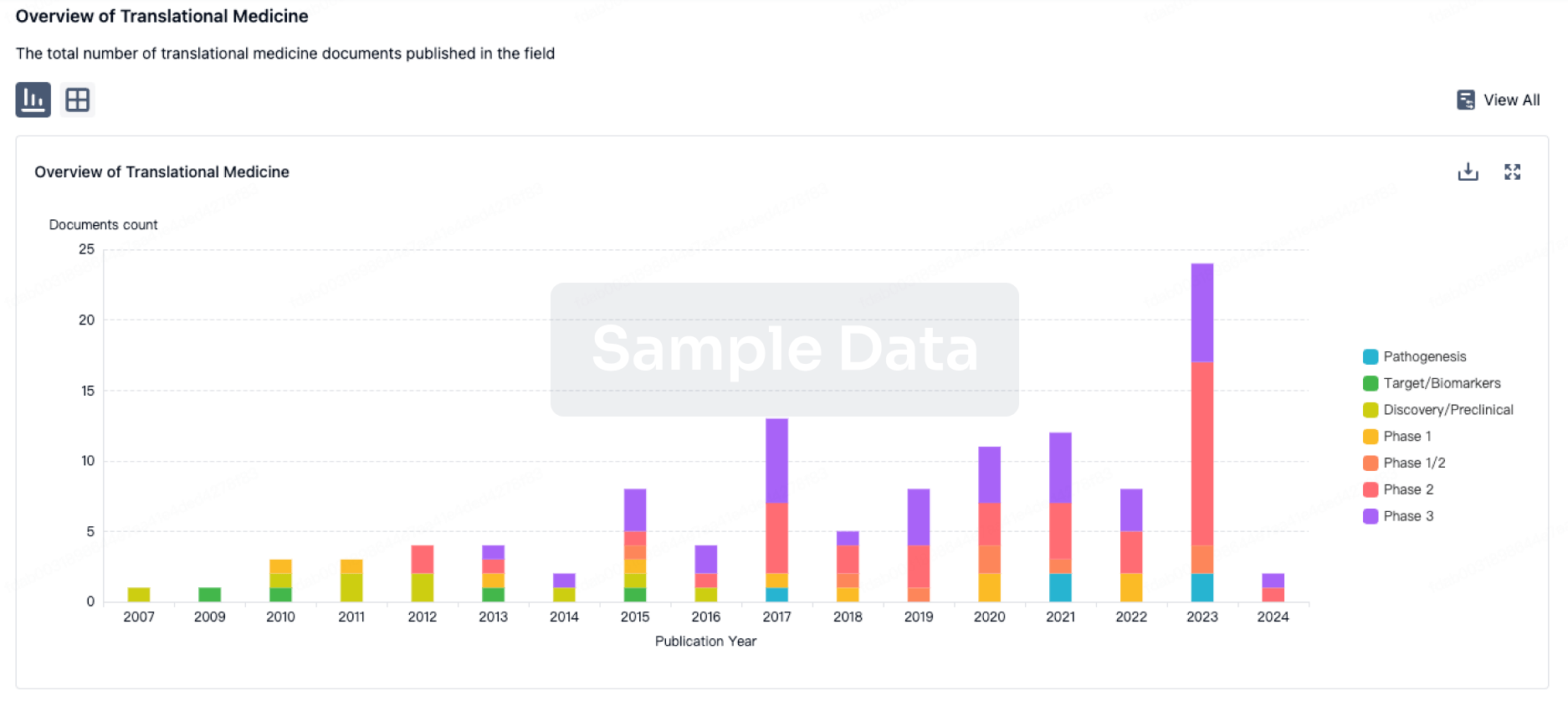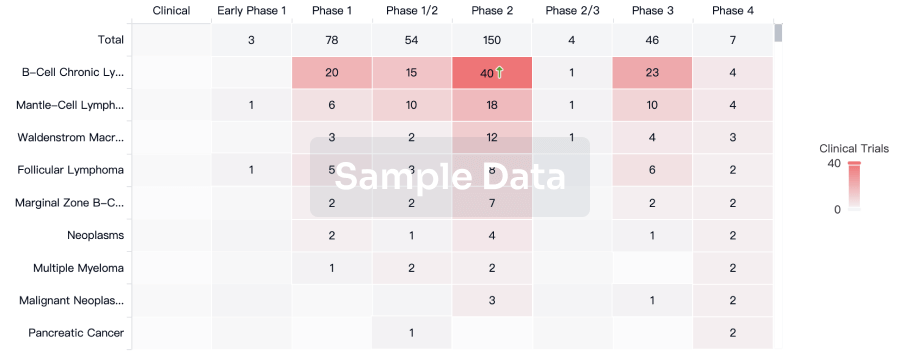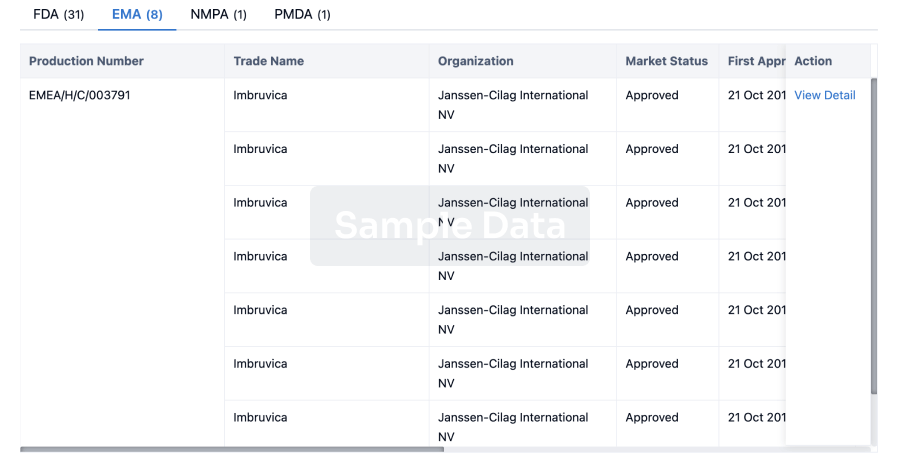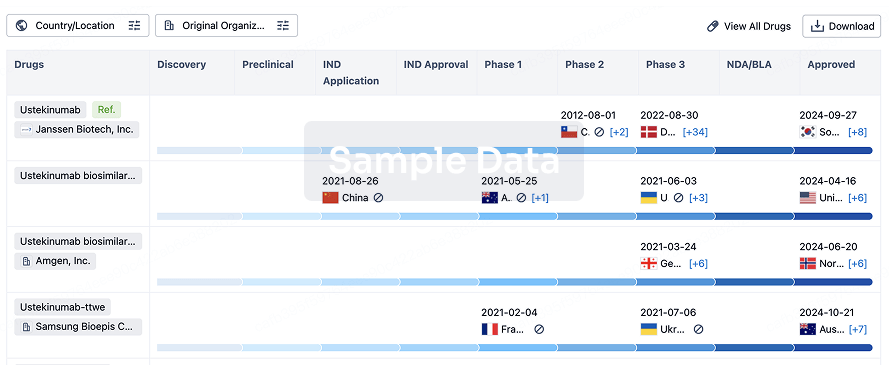Request Demo
Last update 25 Oct 2025
Follicle Stimulating Hormone Follow-On Biologic(Anhui Anke Biotechnology)
Last update 25 Oct 2025
Overview
Basic Info
Drug Type Hormone |
Synonyms follicle stimulating hormone, follicle stimulating hormone follow-on biologic(Anhui Anke Biotechnology), Follitropin Gamma + [1] |
Target |
Action agonists |
Mechanism FSHR agonists(Follicle-stimulating hormone receptor agonists) |
Therapeutic Areas |
Active Indication- |
Inactive Indication |
Originator Organization |
Active Organization- |
Inactive Organization |
License Organization- |
Drug Highest PhasePendingDiscovery |
First Approval Date- |
Regulation- |
Structure/Sequence
Sequence Code 3246α

Source: *****
Sequence Code 3253β

Source: *****
Related
9
Clinical Trials associated with Follicle Stimulating Hormone Follow-On Biologic(Anhui Anke Biotechnology)IRCT20230528058312N2
Investigating the effect of exosome injection extracted from seminal plasma, stem cells derived from Wharton's testosterone gel and FSH on the process of spermatogenesis in NOA individuals.
Start Date20 Feb 2024 |
Sponsor / Collaborator- |
ChiCTR2300067329
Recombinant luteinizing hormone supplementation based on FSH/LH values will improve clinical outcomes with antagonist protocol: a prospective, single-center, single-blind, randomized controlled trial
Start Date01 Jan 2023 |
Sponsor / Collaborator- |
ChiCTR2200062012
Acquired hypogonadism
Start Date20 Jul 2022 |
Sponsor / Collaborator- |
100 Clinical Results associated with Follicle Stimulating Hormone Follow-On Biologic(Anhui Anke Biotechnology)
Login to view more data
100 Translational Medicine associated with Follicle Stimulating Hormone Follow-On Biologic(Anhui Anke Biotechnology)
Login to view more data
100 Patents (Medical) associated with Follicle Stimulating Hormone Follow-On Biologic(Anhui Anke Biotechnology)
Login to view more data
5,548
Literatures (Medical) associated with Follicle Stimulating Hormone Follow-On Biologic(Anhui Anke Biotechnology)31 Dec 2025·ANNALS OF MEDICINE
Association of follicle-stimulating hormone with dyslipidaemia in men with obstructive sleep apnoea
Article
Author: Zhang, Yijing ; Zhao, Zehua ; Wang, Yan ; Zou, Juanjuan ; Sun, Xiaojing ; Li, Yanzhong ; Fu, Qiang ; Lei, Dapeng ; Guo, Ruixiang
PURPOSE:
Obstructive sleep apnoea (OSA) is associated with both abnormal hormone secretion and dyslipidaemia. Follicle-stimulating hormone (FSH) can induce postmenopausal dyslipidaemia. This study aimed to explore the relationship between FSH and dyslipidaemia among male OSA patients.
PATIENTS AND METHODS:
A total of 257 subjects admitted to the Department of Otorhinolaryngology for uvulopalatopharyngoplasty between August 2020 and September 2022 were screened. Sleep breathing monitoring data, biochemical indicators, and physical measurements were collected. Spearman correlation tests were used to analyse the correlation between FSH and lipid levels. Logistic regression analysis was used to determine the odds ratios (ORs) and 95% confidence intervals (95% CIs) for dyslipidaemia as assessed by the presence of hyper-TC, hyper-LDL-C, hypo-HDL-C and hyper-TG. The potential mediating role of FSH was estimated by the mediation analyses.
RESULTS:
A total of 194 patients with OSA were ultimately included. Participants with a higher FSH had more severe OSA, had higher TG levels and higher percentages of hyper-TG. A positive dose-response relationship was observed between FSH and OSA severity or TG (P for trend both < 0.05). There was a positive correlation between FSH and TG (r = 0.281, p < 0.001). Furthermore, after adjusting for multiple variables, including age, BMI, smoking status, alcohol consumption, OSA severity, and oestradiol, FSH was significantly associated with hyper-TG, with ORs (95% CIs) across higher FSH quartiles of 2.791 (1.115, 6.987), 3.242 (1.272, 8.264), and 4.163 (1.441, 12.022), respectively. A significant positive linear trend was observed (p = 0.020 for a linear trend). In addition, FSH had a 14.8% mediating effect on the relationship between OSA severity and hyper-TG.
CONCLUSION:
FSH was independently associated with hyper-TG and played a significant mediating role in the relationship between OSA and dyslipidaemia.
01 Nov 2025·European Journal of Obstetrics & Gynecology and Reproductive Biology
The influence of serum luteinising hormone concentrations post GnRH agonist trigger on metaphase II oocytes in IVF/ICSI cycles
Article
Author: Sawant, Shital ; Homburg, Roy ; Tulsyan, Sasha
BACKGROUND:
Gonadotropin-releasing hormone agonist (GnRHa) trigger is widely used in IVF/ICSI to reduce ovarian hyperstimulation syndrome (OHSS) risk, particularly in women with polycystic ovary syndrome (PCOS). However, the endocrine response is variable, and a threshold post-trigger luteinizing hormone (LH) level predictive of mature oocyte (metaphase II, MII) yield has not been clearly established. This study aimed to identify optimum and minimum LH levels measured 12 h after GnRHa trigger that are predictive of mature oocyte yield in PCOS patients.
METHODS:
This prospective, single-centre observational study included 104 PCOS patients undergoing controlled ovarian stimulation with a GnRH antagonist protocol. Final oocyte maturation was triggered with 2 ml Buserelin. Serum LH, FSH, and progesterone were measured 12 h post-trigger. The primary outcome was the correlation between hormone levels and MII oocyte yield.
RESULTS:
Mean LH at 12 h post-trigger was 34.05 IU/L (SD 23.07, range 0.9-134.4 IU/L). No significant correlation was found between LH and MII yield (r = -0.123; p = 0.215), fertilisation rate (r = 0.046; p = 0.641), or blastocyst formation (r = 0.162; p = 0.101). FSH and progesterone also showed no significant associations. ROC analysis showed poor predictive value of LH for mature oocyte yield (AUC = 0.402). MII yields varied widely across LH levels, with no identifiable minimum or optimum threshold.
CONCLUSION:
No LH threshold at 12 h post-GnRHa trigger predicted optimal or suboptimal oocyte maturation. Routine post-trigger LH measurement lacks clinical utility for predicting mature oocyte yield in PCOS IVF/ICSI cycles.
01 Nov 2025·FOOD CHEMISTRY
Highly selective and sensitive colorimetric and fluorescence detection of copper(II) and glyphosate using dual-functional peptide probe and its multifarious applications in food sample analysis and bioimaging
Article
Author: An, Yong ; Cao, Xinlin ; Biqume, Rige ; Jia, Mengying ; Ai, Jiaxiang ; Li, Shiyang ; Pu, Chunmei ; Wang, Peng ; Yue, Yumei
A novel dual-functional probe FSH from dipeptide (Ser-His-NH2) and 5-carboxy fluorescein (5-FAM) fluorophore was developed for the relay detection of copper ions (Cu2+) and glyphosate (Glyp). As design, FSH exhibited high selectivity to Cu2+ using colorimetric and fluorimetric methods, and formed non-fluorescence FSH-Cu2+ ensemble. Further, the FSH-Cu2+ ensemble responded to glyphosate with notable selectivity through fluorescence enhancement effect and colorimetric changes. The limit of detections (LODs) for Cu2+ and glyphosate were calculated as 40.4 nM and 15.9 nM, respectively. Notably, FSH was successfully applied to the continuous detection and imaging of Cu2+ and glyphosate in real water samples, test strips, living cells and zebrafish larvae. Moreover, we constructed the molecular logic gate for high sensitivity analysis, and the applications of FSH for "naked-eye" monitoring in food, plants and soil. More importantly, a portable smartphone-assisted RGB analysis method was designed to allow semi-quantitative detection of Cu2+ and glyphosate.
3
News (Medical) associated with Follicle Stimulating Hormone Follow-On Biologic(Anhui Anke Biotechnology)20 Aug 2024
SAN FRANCISCO, Aug. 20, 2024 /PRNewswire/ -- A groundbreaking study led by a team of renowned fertility specialists and data scientists has demonstrated the potential of artificial intelligence (AI) in optimizing the ovarian stimulation process for in vitro fertilization (IVF) treatment. The study, titled "Optimizing Oocyte Yield Utilizing a Machine Learning Model for Dose and Trigger Decisions: A Multi-Center, Prospective Study," was led by Dr. Chelsea Canon, a reproductive endocrinologist and infertility specialist for RMA of New York and was published in Scientific Reports. The study was a multi-center, prospective analysis of AI's impact on IVF outcomes.
The Alife software, known as Stim Assist™, provides physicians with personalized, data-driven recommendations based on patient-specific characteristics and follicle growth. This study is the first to prospectively investigate the clinical outcomes of IVF patients when clinicians utilized AI software to assist in determining the optimal starting dose of follicle-stimulating hormone (FSH) and the timing of trigger injection.
"The results of our study are incredibly promising," said Dr. Eric Flisser, one of the lead authors of the study. "We found a trend towards improved egg yield and a reduction in FSH usage when physicians used Alife's Stim Assist™. This suggests that AI has the potential to refine the starting dose of FSH and narrow down the timing of the trigger injection during ovarian stimulation, ultimately benefiting patients by optimizing the number of mature oocytes retrieved and reducing medication costs."
"The use of AI in IVF represents a significant advancement in reproductive medicine," said Dr. Alan B Copperman, CEO of RMA of New York and a collaborator of the study, "By leveraging AI to optimize ovarian stimulation decisions, we can potentially improve IVF outcomes and streamline the treatment process for patients."
The study, which involved 291 patients undergoing IVF treatment at two clinics in the United States, underscores the potential of AI to revolutionize the field of assisted reproductive technology. Dr. Canon and Dr. Copperman study is the first to evaluate the efficacy of AI for optimizing ovarian stimulation using prospective post-market data. The researchers emphasize the need for further studies to validate these findings and explore the broader application of AI in IVF treatment.
ABOUT ALIFE HEALTH
Alife is modernizing and personalizing the IVF process with cutting edge artificial intelligence technology that aims to improve outcomes and care for all. The company has built a consortium of partnerships with the top clinics and most renowned physicians to bring significant clinical improvements to patients globally. Alife has been recognized as one of Fast Company's Most Innovative Companies of 2024 and won the 2024 A'Design Award for Information Technologies Design. Founded by Paxton Maeder-York in 2020, the company is based in San Francisco and backed by top tier venture capital investors including Lux Capital, Maveron, and Union Square Ventures. To learn more visit .
PRESS CONTACT
Carla English, [email protected]
SOURCE Alife Health
12 Jul 2023
Proov’s range of tests offers a comprehensive fertility baseline assessment with its four products: Reserve: Follicle Stimulating Hormone, Predict: Luteinizing Hormone, Confirm: PdG and Check: Human Chorionic Gonadotropin.
According to the company, these treatments enable women to measure their major fertility hormones; providing insight into the hormonal factors underlying ovarian reserve, peak fertility, ovulation, implantation and confirmation of pregnancy.
Amy Beckley, founder of Proov, said: “Many products are positioned as the answer to fertility issues when they only provide half the picture of what may be going with their reproductive system.”
“Proov begins to fill that critical gap in knowledge for people trying to conceive. We are thrilled to have a partner like 2San who have the same values of empowering people to lead better lives, providing them with products that are accessible, affordable and high-quality.”
Beckley, having suffered seven miscarriages and choosing to undergo multiple rounds of IVF, created Proov primarily to help women take their fertility journeys into their own hands.
2San operates internationally with a team of clinical experts and distribution specialists. Proov is the first of several products 2San will distribute in the fertility space.
Valerie Palmieri, member of the 2San scientific advisory committee, added: “We are continuously scouring the globe to bring novel solutions and digital technologies to market that transform lives and empower people everywhere to own their health.”
googletag.cmd.push(function () {
googletag.display('text-ad1');
});
“Proov’s innovative fertility at-home tests provide a way for people to take their fertility journey into their own hands. We are excited to be the exclusive partner in distributing these products to stores nationwide.”
This summer, 2San will also distribute a novel male fertility test that measures the key indicators of male fertility, of which there are no competing products on the market.
The product, SwimCount, will expand the male fertility market and also give men the 'ability to take control of their fertility.'
29 Nov 2017
SAN JOSE, Calif. – Although CAR-T therapies have only been approved for the treatment of B-cell blood cancers, tiny ITUS believes it is on track to develop a CAR-T treatment for solid tumors.
On Nov. 14, the California company struck a deal with Pennsylvania-based The Wistar Institute for a Chimeric Antigen Receptor T-Cell (CAR-T) technology aimed initially at treating ovarian cancer and eventually additional solid tumors.
Amit Kumar, chief executive officer of ITUS, told BioSpace in an exclusive interview that he believes the licensed technology has a “unique approach” to targeting ovarian cancer. Instead of using an antibody fragment, like the B-cell targeting CAR-Ts, the engineered T-cells being developed by ITUS will use the Follicle Stimulating Hormone (FSH) to target ovarian cells that express the FSH-Receptor.
Kumar said the CAR-T treatment will most likely will used to treat refractory ovarian cancer patients for which there are few options.
“This approach is different from what others are trying,” Kumar said. “The Follicle Stimulating Hormone is exclusive to the ovaries. It’s not found on the other cells in the body. Attacking this unique receptor on the ovarian cancer cell will be a powerful approach.”
So far the animal studies performed by ITUS are showing promise, Kumar said. Next year the company intends to complete data studies and Investigative New Drug Application so they can take the program into the clinic and begin work on humans. That will hopefully lead to confirmation of ITUS’s theories about FSH, Kumar said. It will also likely lead to other solid tumor targets, particularly in prostate and pancreatic cancers.
The expectation is if the ITUS approach works on solid tumors the value to cancer patients will be immense because there are more solid tumors than blood cancers. Case in point, Kumar said, the ovarian cancer market dwarfs the B-cell cancer market.
The American Cancer Society estimates for 2017 that about 22,440 women will receive a new diagnosis of ovarian cancer and about 14,080 women will die from ovarian cancer. On average, the five-year relative survival for all types of ovarian cancer is about 45 percent. If it’s found early and treated, relative survival rates increase to about 92 percent.
ITUS formed a subsidiary, Certainty Therapeutics, to develop and commercialize the CAR-T technology. Days after ITUS licensed the CAR-T technology, the company and its new subsidiary entered into a research and development agreement with Moffitt Cancer Center to advance the program and help drive it into the clinic. Kumar said the agreement is in line with ITUS’s goal of remaining a lean company.
He said the company’s plan is to work with partners at every level. The deal with Moffitt gives ITUS access to Moffitt’s laboratories and a “group of stellar world-class physicians and researchers who can do the work,” Kumar said.
This strategy will allow the company to work with multiple research institutes and advance the ITUS technologies to a stage where they can be partnered with corporate allies.
In addition to the CAR-T program, ITUS is also moving forward with its Cchek cancer detection platform, a program invented by Kumar. The program is a liquid biopsy that will measure immune cells that indicate cancer development. Kumar said they believe this technology will work on every type of tumor. Instead of measuring cancer, the Cchek platform will measure the body’s immune response to cancer.
The Cchek platform should be able to determine if a traditional biopsy is required. Kumar said 95 percent of biopsies are negative, which means that many patients have gone through minor traumas from some of the tests for a negative result.
“There’s all sorts of issues with a biopsy. Our goal is to develop a test that’s confirmatory. Before that needle gets stuck in your lung (for a lung cancer biopsy), we want a simple blood-based test. From that test they can tell if a biopsy is necessary,” Kumar said. “If we can eliminate 25 to 50 percent of biopsies, it’s a home run.”
ITUS is initially developing its Cchek technology with a focus on prostate and breast cancers. Kumar estimated that the company is about 18 to 24 months away from taking it to the U.S. Food and Drug Administration for approval and possible commercialization. During this time period, Kumar hopes ITUS can find corporate partners to help commercialize the test.
Kumar, the former head of CombiMatrix Corporation, became CEO of ITUS in July. He took over after it had shifted its focus to almost exclusively developing cancer therapies. Over the next few months, the company will primarily focus on its two programs while Kumar begins to meet with investors and media to talk about the company.
“We’re still under the radar right now, and we feel that we’ll be coming out pretty soon,” Kumar said.
CollaborateAntibody
100 Deals associated with Follicle Stimulating Hormone Follow-On Biologic(Anhui Anke Biotechnology)
Login to view more data
R&D Status
10 top R&D records. to view more data
Login
| Indication | Highest Phase | Country/Location | Organization | Date |
|---|---|---|---|---|
| Infertility, Female | Discovery | China | - |
Login to view more data
Clinical Result
Clinical Result
Indication
Phase
Evaluation
View All Results
| Study | Phase | Population | Analyzed Enrollment | Group | Results | Evaluation | Publication Date |
|---|
No Data | |||||||
Login to view more data
Translational Medicine
Boost your research with our translational medicine data.
login
or

Deal
Boost your decision using our deal data.
login
or

Core Patent
Boost your research with our Core Patent data.
login
or

Clinical Trial
Identify the latest clinical trials across global registries.
login
or

Approval
Accelerate your research with the latest regulatory approval information.
login
or

Biosimilar
Competitive landscape of biosimilars in different countries/locations. Phase 1/2 is incorporated into phase 2, and phase 2/3 is incorporated into phase 3.
login
or

Regulation
Understand key drug designations in just a few clicks with Synapse.
login
or

AI Agents Built for Biopharma Breakthroughs
Accelerate discovery. Empower decisions. Transform outcomes.
Get started for free today!
Accelerate Strategic R&D decision making with Synapse, PatSnap’s AI-powered Connected Innovation Intelligence Platform Built for Life Sciences Professionals.
Start your data trial now!
Synapse data is also accessible to external entities via APIs or data packages. Empower better decisions with the latest in pharmaceutical intelligence.
Bio
Bio Sequences Search & Analysis
Sign up for free
Chemical
Chemical Structures Search & Analysis
Sign up for free
